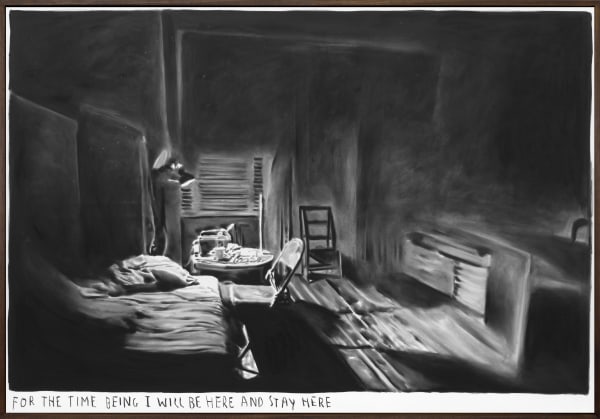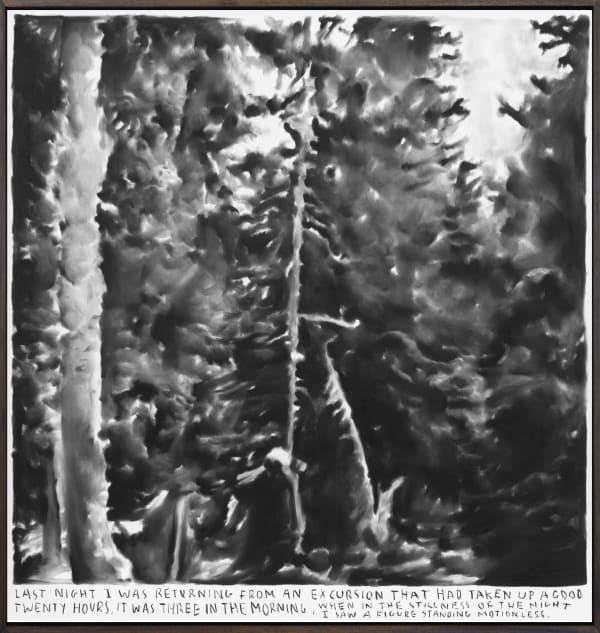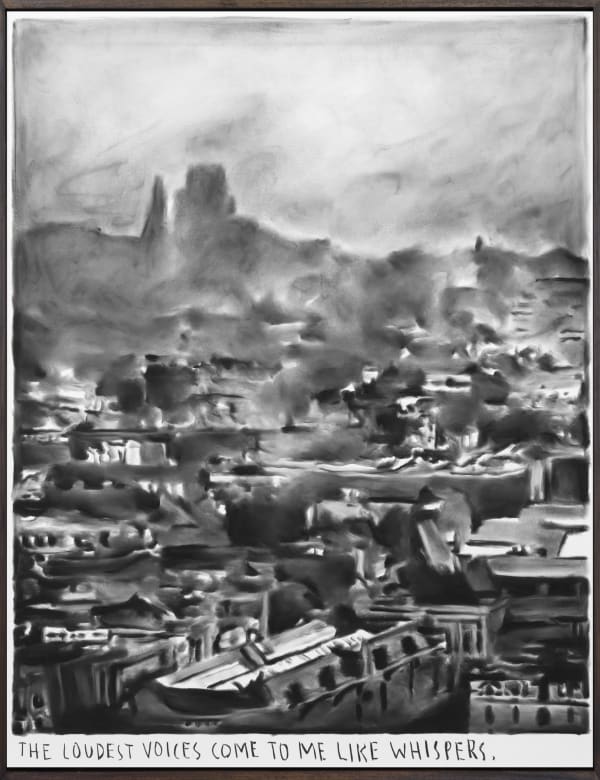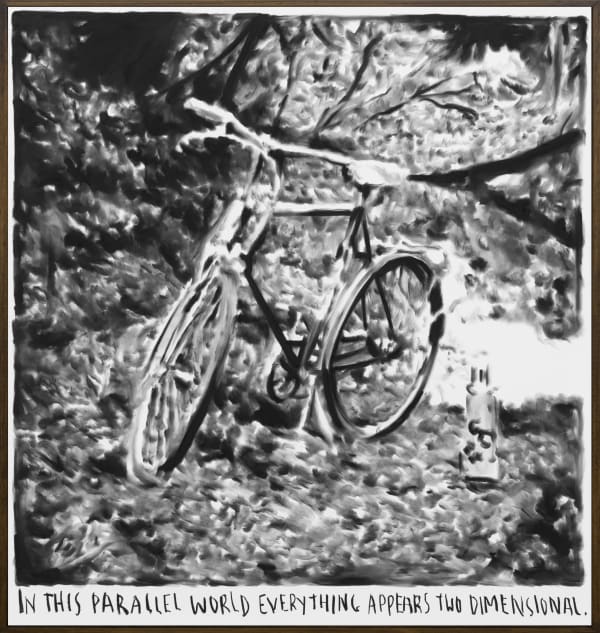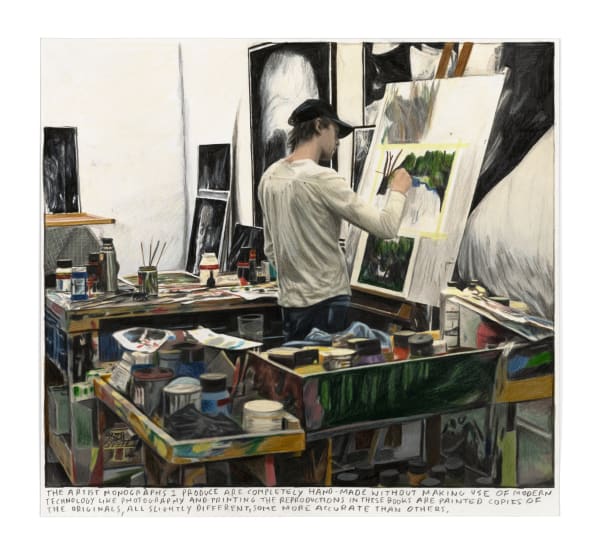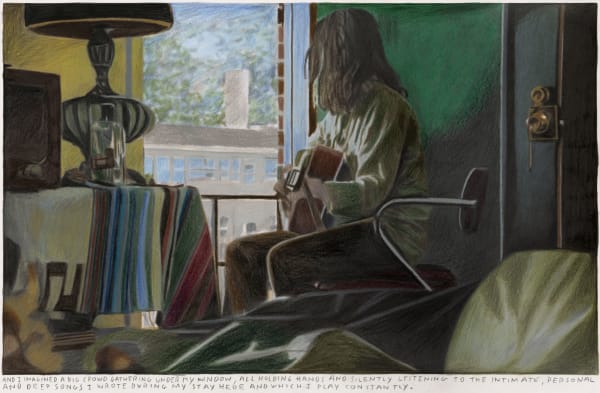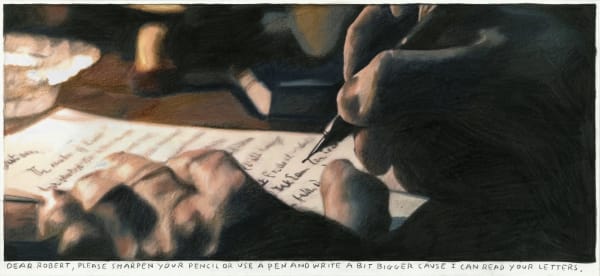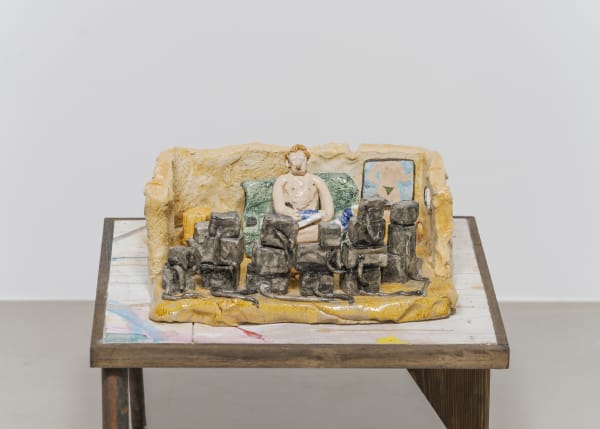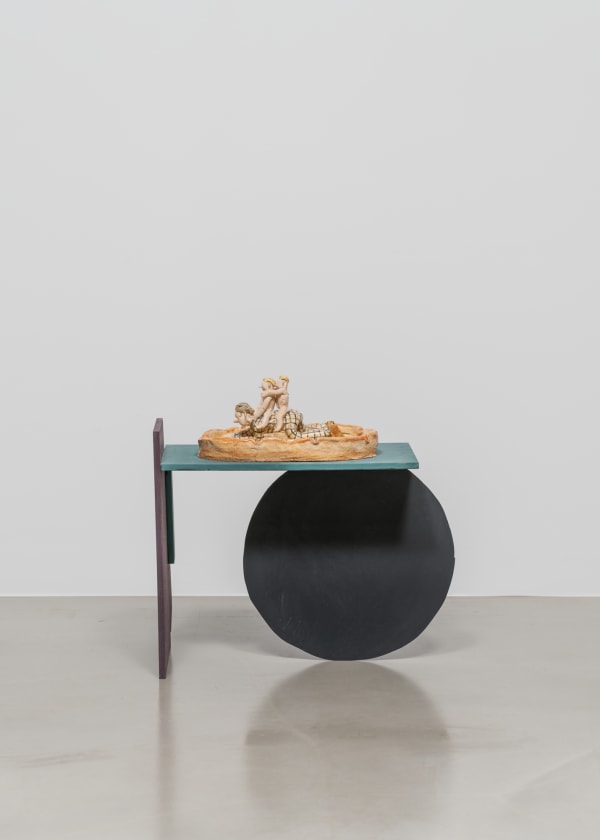Rinus Van de Velde: On Another Plane of Existence
Gallery Baton is pleased to present On Another Plane of Existence, a solo exhibition by Rinus Van de Velde (b. 1983), from 27th May to 27th June. Despite his relatively young age, Rinus Van de Velde has firmly established a reputation as one of the young leading figures in the international art scene, with his solo exhibitions presented by prestigious museums including S.M.A.K. (Belgium, 2016), Stedelijk Museum (Netherland, 2012), CAC Málaga (Spain, 2013), CAFA Art Museum (China, 2014), and upcoming exhibitions at Kunstmuseum Luzern (Switzerland) and BOZAR Centre for Fine Arts (Belgium) in 2021. His first exhibition at Gallery Baton opens an opportunity to audience for discovering his multidisciplinary practice embracing paintings, drawings, videos and ceramics.
Van de Velde explores the clear yet obscure definition of ‘reality’ and ‘fiction’, and moreover their intriguing relation. His practice is an outcome of his persistent investigation of those concepts, and narratives constructed by adaptations of them. A critical factor which distinguishes fiction and nonfiction depends on whether an incident actually occurs or not. At this point, another dilemma appears; when an event identical to a certain fiction happens, it can belong to the realm of nonfiction only when there is a witness who watches or records it. “Something we have seen in a movie actually happens”, the catchy headline we often hear from the media, indicates that perhaps reality and fiction have a low threshold between them and these two territories can be easily overlapped any time soon. Thus, fiction, reality and considerable potential of their loose boundary are the key word to understand Van de Velde’s artistic practice.
Van de Velde’s paintings and drawings take a familiar layout whose images occupy almost entire plane and texts are placed on the far below, and the pictorial layout consequently gives a sense of reality to the depicted scenes or incidents. Having been applied in various channels including magazines, catalogues and digital platforms, the pictorial layout has become one of the standard styles since the emergence of text-based journalism achieved by the development of mass-printing. Adopting this traditional layout distinct from modes of which cartoons or illustrations deal with texts, for instance, using speech bubbles or juxtaposing texts within pictures, the artist encourages audience to reconsider reality of the situations which the artist describes in his paintings and to continuously infer an allegory between the image and the text.
His source materials include not only collected photographs he took by himself and inspiring images he discovered in the media, but also his subjective imagination and interpretations on events delivered only in a text form of articles or literature. His signature black charcoal paintings show a straightforward manner which highlights quick and bold strokes and peculiar traits of the material. When black and white newspapers were typical, printed images still possessed a force assuring their veracity and originality. In this context, Van de Velde’s charcoal paintings partake of modernity on the course of the long history of painting, and at the same time, he implicitly generates a nostalgic sensation of the era when black and white media prospered, in order to provide the authority to his practice as the old media wielded. As Alain Badiou once said, “Black is explicitly nihilistic and deadly.” Especially, when we read that Badiou draws several examples of how the black flags have been used in human history, the black color seems to be even subversive. Despite their ideal combination of the tranquillity of standstill images and poetic sentences, Van de Velde’s charcoal paintings cause the elusive ambience as though truth and movements lurked behind their facade.
In this exhibition, Van de Velde mainly unveils his new series of small-sized colored pencil drawings. Although the colorful images which are rarely found in his previous works maintain the layout of his black charcoal paintings, they are reminiscent of trivial events or static landscapes by Edward Hopper due to their relatively small scale. His charcoal paintings pay homage to conventional materials, whereas color drawings remind us of contemporary digital formats such as Instagram, since they have the wider color spectrum and relatively elevated visibility.
New video work The Villagers (2017-19) is played at Blue Baton next to the main gallery space. To produce this single channel video, he has built 17 stages made of woods and cardboards in the studio for 3 years, and his gallerist, colleagues, friends and his own self participated as actors without any script. The background of the video seems to be a small village near to the Alps and it consists of the repeated cutaway long-take scenes without the characters’ dialogues or moments of encountering each other.
Even though only occasional noises and movements of characters preoccupied with their routines appear in the video, there is a bizarre tension on the screen. Van de Velde mentioned that behaviours and situations of the characters have similarities to his own 'alter egos'. This commentary implies that this work also closely associates with his approaches in the previous videos and it is the process of creating his fictional autobiography. He adopts advanced filming techniques and devices of the commercial movie production, however, he deliberately exposes coarseness of the indoor decorations and objects in the video to continuously remind us of that the sequences are hypothetic situations based upon fiction.
-
 Rinus Van de VeldeMost of the time during the day..., 2018
Rinus Van de VeldeMost of the time during the day..., 2018 -
 Rinus Van de VeldeGeorge, I yelled…, 2019
Rinus Van de VeldeGeorge, I yelled…, 2019 -
 Rinus Van de VeldeFor the time being…, 2019
Rinus Van de VeldeFor the time being…, 2019 -
 Rinus Van de VeldeA high pitched voice…, 2019
Rinus Van de VeldeA high pitched voice…, 2019 -
 Rinus Van de VeldeLast night I was returning from an excursion…, 2019
Rinus Van de VeldeLast night I was returning from an excursion…, 2019 -
 Rinus Van de VeldeThe loudest voices…, 2019
Rinus Van de VeldeThe loudest voices…, 2019 -
 Rinus Van de VeldeIn this parallel universe…, 2019
Rinus Van de VeldeIn this parallel universe…, 2019 -
 Rinus Van de VeldeHalf an hour..., 2019
Rinus Van de VeldeHalf an hour..., 2019 -
 Rinus Van de VeldeDuring these daily strolls..., 2018
Rinus Van de VeldeDuring these daily strolls..., 2018 -
 Rinus Van de VeldeThe artist monographs..., 2020
Rinus Van de VeldeThe artist monographs..., 2020 -
 Rinus Van de VeldeWhen it rained…, 2020
Rinus Van de VeldeWhen it rained…, 2020 -
 Rinus Van de VeldeAnd I imagined a big crowd…, 2020
Rinus Van de VeldeAnd I imagined a big crowd…, 2020 -
 Rinus Van de VeldeMeet me after work..., 2019
Rinus Van de VeldeMeet me after work..., 2019 -
 Rinus Van de VeldeThe whole room was covered with M&M's., 2019
Rinus Van de VeldeThe whole room was covered with M&M's., 2019 -
 Rinus Van de VeldeIt must have been somewhere here…, 2019
Rinus Van de VeldeIt must have been somewhere here…, 2019 -
 Rinus Van de VeldeDear Robert,…, 2019
Rinus Van de VeldeDear Robert,…, 2019 -
 Rinus Van de VeldeHere is so much more to see,…, 2019
Rinus Van de VeldeHere is so much more to see,…, 2019 -
 Rinus Van de VeldeThis can be an option…, 2020
Rinus Van de VeldeThis can be an option…, 2020 -
 Rinus Van de VeldeThe negotiation, 2020
Rinus Van de VeldeThe negotiation, 2020 -
 Rinus Van de VeldeSelf portrait as a football analyst, 2020
Rinus Van de VeldeSelf portrait as a football analyst, 2020 -
 Rinus Van de VeldeSunday mornings, 2020
Rinus Van de VeldeSunday mornings, 2020 -
 Rinus Van de VeldeThe Villagers, 2017-2019
Rinus Van de VeldeThe Villagers, 2017-2019



